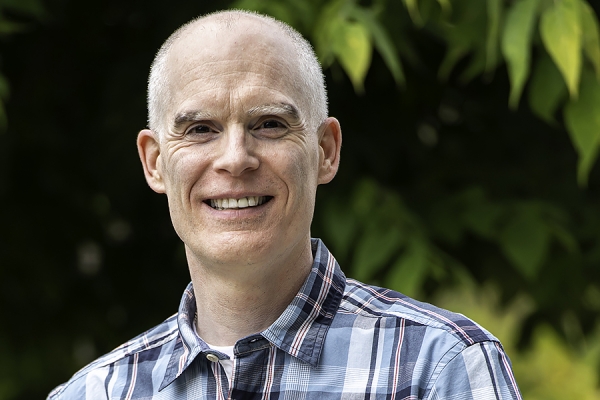 Kinesiology prof Dave Andrews adapted community-building activities to create a learning space where students feel engaged and comfortable.
Kinesiology prof Dave Andrews adapted community-building activities to create a learning space where students feel engaged and comfortable.
During the Fall 2020 semester, kinesiology professor Dave Andrews taught a graduate course on Biomechanics in the Workplace, and a first-year required course on Functional Anatomy. Both courses are normally taught synchronously and in person.
In his graduate course of 11 students, Dr. Andrews maintained the seminar-based structure that the course normally has; students took turns leading synchronous discussions based on research articles provided in advance. Student interaction, engagement, and attendance remained high, although communication occurred primarily using the mic or through chat. Class presentations on cutting-edge research topics were also shared by students as part of the course structure.
With more than 200 students in the Functional Anatomy class, Andrews took a different approach. He provided pre-recorded lectures on YouTube ahead of synchronous class times so that the content was accessible to students wherever they were in the world. Lab demonstration videos that he created supplemented lecture material.
During synchronous sessions, Andrews used the time to discuss key concepts, review material, and address student questions, rather than focus on course content. He used online polling to gauge student understanding and inform the development of weekly online tests, a mode of assessment he regularly uses in this course.
In both classes, Andrews offered a welcoming environment and created a learning space where students felt engaged and comfortable to interact, adapting the community-building activities he employs when teaching in person.
For example, with his first-year students, he used humour and told them stories to connect with them and to convey optimistic and supportive messages throughout the term. He also wore a different graphic T-shirt to each class that reflected the course content being discussed that day, and invited students to create fun videos for the class that showcased their spirit and interest in the material.
In his graduate course, Andrews scheduled informal meetings outside of class time so that everyone could interact socially.
—Bridget Heuvel
